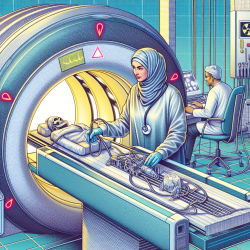Introduction
The management of manic episodes in bipolar disorder presents significant challenges, both clinically and economically. A recent study titled "Pattern of healthcare resource utilization and direct costs associated with manic episodes in Spain" provides valuable insights into the economic burden and resource utilization associated with these episodes. As practitioners, understanding these findings can enhance our ability to make data-driven decisions that improve patient outcomes and reduce costs.
Key Findings from the Study
The study, conducted in Spain, involved 784 patients diagnosed with bipolar type I disorder experiencing active manic episodes. The research highlighted several key points:
- High Direct Costs: The mean direct cost per patient was approximately €4,500, with hospitalization accounting for 55% of this cost.
- Resource Utilization: The study found significant utilization of healthcare resources, particularly hospitalizations, which were necessary for 50% of the patients.
- Pharmacological Treatment: Psychopharmacological treatments, including antipsychotics and mood stabilizers, constituted 30% of the total costs.
Implications for Practitioners
These findings underscore the importance of effective management strategies to reduce the economic burden of manic episodes. Here are some strategies practitioners can consider:
- Preventive Measures: Implementing preventive pharmacological measures and enhancing family or social support can potentially reduce the need for hospitalization, thus lowering costs.
- Adherence to Treatment: Encouraging adherence to prescribed treatments can improve long-term outcomes and reduce the frequency of manic episodes.
- Comprehensive Care Plans: Developing comprehensive care plans that include regular psychiatric evaluations and community-based support can help manage symptoms more effectively.
Encouraging Further Research
While this study provides valuable insights, further research is necessary to explore cost-effective interventions and management strategies. Practitioners are encouraged to engage in research initiatives that aim to refine treatment protocols and reduce healthcare costs associated with bipolar disorder.
Conclusion
Understanding the patterns of healthcare resource utilization and costs associated with manic episodes is crucial for improving patient care and reducing economic burdens. By implementing data-driven strategies and encouraging further research, practitioners can contribute to better outcomes for patients with bipolar disorder.
To read the original research paper, please follow this link: Pattern of healthcare resource utilization and direct costs associated with manic episodes in Spain.










